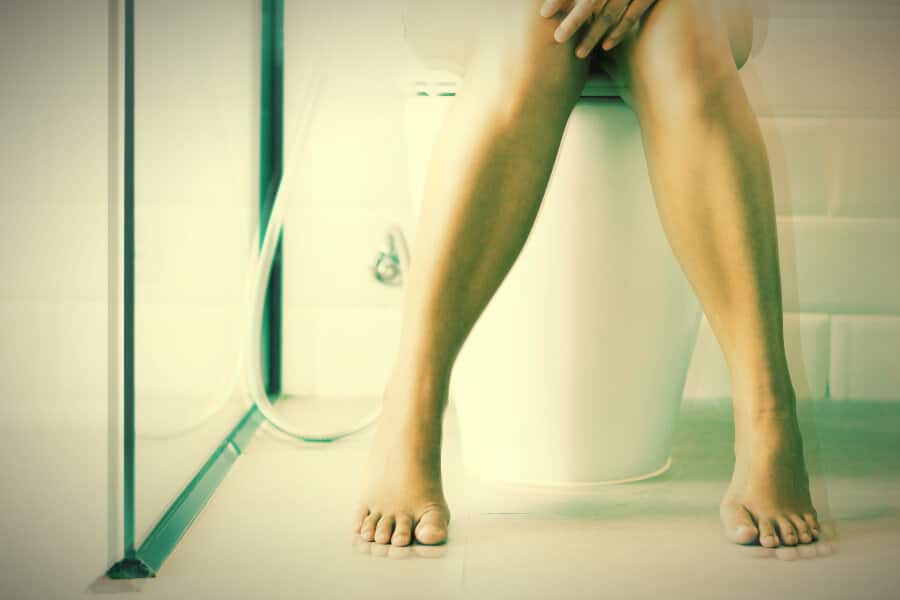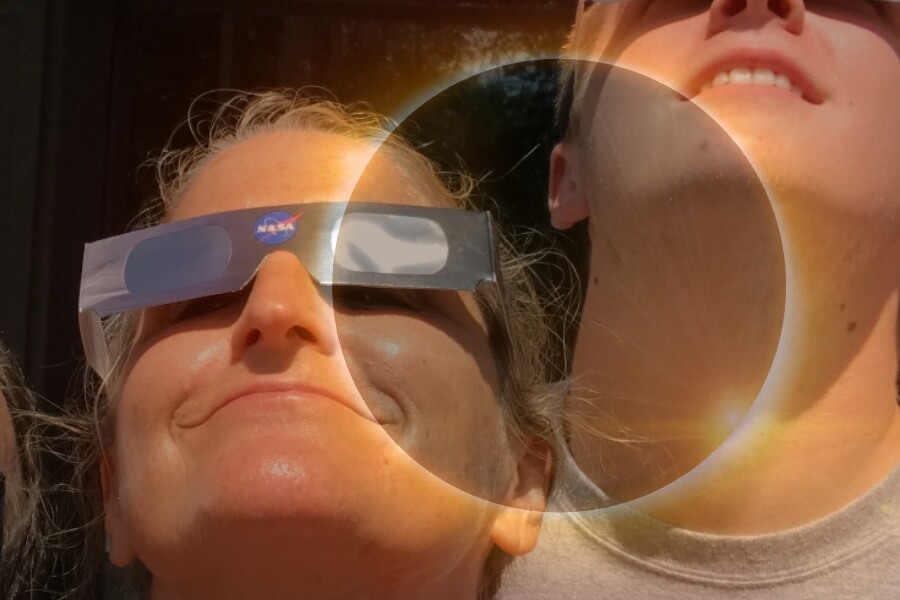NEXTTRIBE FAVORITE Editor’s Note: On Feb. 15th, NextTribe marked its sixth anniversary. To celebrate this month, we are sharing our favorite articles from the 1,500 plus we’ve published so far. Here is an important health story that could have been so cringy, but in Stephanie Dolgoff’s hands, it is both informative and funny. Quite a feat.
***
Not too long ago, I was finishing up in the bathroom when something felt odd as I wiped. Hmm, I thought, and then like any 50-something woman checking Instagram on the toilet would do these days, I turned on my iPhone camera, stuck it between my legs, and snapped a selfie like no other (one I would most definitely not be sharing with anyone).
What I saw made me gasp: There was a golf ball-sized blob of tissue poking out of my vagina.
Don’t worry—that’s about as graphic as I’m going to get about me personally, because no one, aside from my doctor and my ever-loving boyfriend, is interested in that particular topography. In fact, I quickly deleted the photo, lest my 14-year-old twins decided to mess with my phone. No one can afford that much therapy.
But I’ll tell you, I’d have been a lot less freaked out had I known what I was looking at. It wasn’t until after lots of ill-advised googling, paper gowns, and the kinds of tests that you endure by imagining yourself on a beach with an umbrella drink that I learned that I had Pelvic Organ Prolapse (POP), which is essentially when your pelvic floor muscles get tired of supporting the organs in the neighborhood of your uterus. Without strong pelvic floor muscles, your cervix, uterus, and/or your bladder start heading southward, as can the walls of your vagina and/or your rectum. You may not even notice a mild case, but if your POP is severe (stage 3 or 4 out of four stages) you may be able to see or feel something, well, popping out.
Symptoms of the Shift
Once I understood what it was, I realized that I had many of the classic symptoms, the most noticeable of which was a feeling of pressure between my legs, as if I were carrying a small sack of apricots in my vagina. Depending on what is prolapsing and how severely, women can also have lower back pain, bladder leakage, constipation, spotting, and other regional delights. Thankfully, POP doesn’t hurt, except for some women during intercourse.
While admittedly unsexy topics like this get scant coverage to begin with, unsexy topics about women over 40 get even less.
As I semi-obsessively began to research the condition, I wondered why, after decades of writing and editing stories about women’s health, I’d never heard more than a passing reference to this condition. It’s incredibly common: Estimates vary, but it appears that more than a quarter of women across all ages have some degree of POP, according to a study from the Journal of the American Medical Association.
Then I sighed. Of course. While admittedly unsexy topics like this get scant coverage to begin with, unsexy topics about women over 40 get even less. Guess what? The rate of POP shoots up after that age, and having given birth increases your odds dramatically, because the weight of a fetus and the surrounding fluid, as well as the pushing involved in vaginal delivery, can stretch out your connective tissues. Obesity doubles your risk, and POP is also more common after menopause, because women’s pelvic floor muscles and ligaments get looser with time and hormonal changes.
Dialing Down My Panic
I spent the next three months dialing down my panic. I am an anxious person, and my frequent feeling of “falling apart”—being so overwhelmed with kids and work and love and the moral decay of the universe that I can’t contain my life—seemed to be literally, physically manifesting itself in my body.
I also seriously wondered, could something really and truly dramatically FALL OUT?
I kept imagining a Disney movie in which the wicked witch cut a bargain with a barren young farm wife: “You will bear a child, fair maid,” she’d cackle. “But in exchange, your REPRODUCTIVE ORGANS WILL SOMEDAY TUMBLE OUT OF YOUR VAGINA!” And when my friends and I gathered for our frequent feminist vent-fests, we laughed until we leaked at the thought of the cohort of men who turn into toddlers when they have a head cold. Imagine if they had to deal with this shit!
I also seriously wondered, could something really and truly dramatically FALL OUT, like a pregnant woman’s water breaking, say, as I ponder new product offerings at Trader Joe’s? There was an image online of a woman’s bladder sitting on an exam table, entirely outside her body, that I fervently wish I could unsee. What about running? Might my footfall rattle something loose? And sex—my boyfriend worried about doing more damage until I assured him that the doctor said intercourse was fine, as long as it didn’t hurt for me. In fact, the second and third medical opinions I got assured me that—despite my outsized fears—nothing was going to wind up suddenly external, although high-impact exercise could, over time, make things worse.
Solving Pelvic Organ Prolapse
I considered my options carefully. If you have a mild case, exercises that strengthen your pelvic floor muscles can improve the situation, and my doctor explained that many women, even with later-stage POP like mine, choose to use a pessary, a solid plastic disc that you can insert to hold things up where they belong. A pessary can also alleviate the feelings of pressure. The other main option is surgical repair, which 300,000 women have each year, according to the National Institutes of Health. Many, many more decide that their POP is something they can live with or manage through nonsurgical means.
Mostly, I wasn’t quite ready for a constant, literally pressing, reminder that the body falling apart is inevitable.
I ultimately decided to have surgery, which in my case involved knitting my muscles back together under general anesthesia. Once I’m all healed, I’ll likely have physical therapy to further strengthen my pelvic floor. Depending on which organs are prolapsed and whether you have bladder leakage, the surgery may be more involved. My thinking was that I’m relatively young and fit, and so I would likely heal well; I’m sexually active and don’t want to deal with a pessary; and, most important, I have health care coverage, but who knows for how long?
But my deciding factor was psychological. At 50, I felt I had a choice: To fix something that was distracting me from enjoyment during sex and making me uncomfortable, thus renewing my contract with my vagina, or to live with the new normal, and make peace, Zen-like, with the impermanence of everything. (I’ve been meditating like a madwoman, yet that level of enlightenment eludes me.) Mostly, I wasn’t quite ready for a constant, literally pressing, reminder that the body falling apart is inevitable. I have my 81-year-old dad for that! But there’s no right answer—every woman with POP needs to balance the discomfort and severity of her condition against the risk and cost of surgery.
I’m almost healed, but I milked my recovery for all it was worth, having my teenagers lift things for me until I can do it without risking popping a stitch. “It’s not as if any of this is your fault, really . . .” I told them, my feet up on cushions. “I mean, just because carrying twins overtaxed my pelvic floor, you shouldn’t, like, feel guilty, or anything. Could you bring me some more tea?” Nope, they won’t need any therapy at all.
Read More: A Better Love Life through Private Coaching and Tantric Sex Lessons





















0 Comments